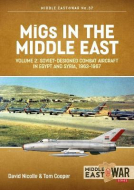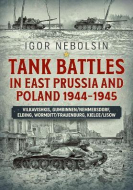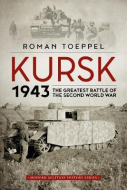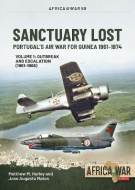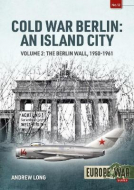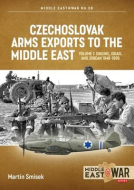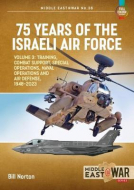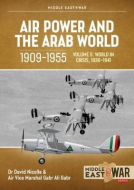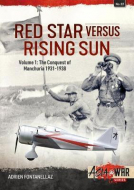
- Agriculture
- Architecture & Design
- Arts & Photography
- Biography
- Business
- Calendars and Diaries
- Childrens (All)
- Childrens (Illustrated)
- Childrens (Picture flats)
- Childrens (Te Reo)
- Classics
- Cooking, Food & Drink
- Craft & Hobbies
- Design (Art / Graphics)
- Design (Interiors)
- Education
- Fashion
- Fiction & Literature
- Fiction - Young Adult
- Gift Ideas
- Health & Wellbeing
- History
- Home & Garden
- Humour & Gift
- Instead of a Card Poems
- Military
- Music
- New Zealand
- NZ (History)
- NZ (Landscapes)
- NZ (Pictorial)
- Poetry
- Reference
- Religion & Faith
- Science & Nature
- Sport & Recreation
- Stationery
- Taschen : 40th Anniversary Edition
- Taschen : BA Basic Art
- Taschen : BU Bibliotheca Universalis
- Te Reo Māori
- Transport
- Travel
Military (455)
|
MiGs in the Middle East: Volume 2 (Middle East@War 37)
ISBN: 9781914059360 Authors: David Nicolle, Tom Cooper Publisher: Helion & Company Hundreds of fighter-bombers of Soviet design and manufacture served in the air forces of multiple frontline Arab states during the first half of the 1960s. Not ... Hundreds of fighter-bombers of Soviet design and manufacture served in the air forces of multiple frontline Arab states during the first half of the 1960s. Not only older Mikoyan i Gurevich MiG-15s and MiG-17s, but also newer types such as the MiG-19 and MiG-21 were acquired in continuously increasing numbers, concurrently with Ilyushin Il-28- and Tupolev Tu-16 bombers, transport types such as the Antonov An-12 and Ilyushin Il-14, and trainers designed by Yakovlev. Nowhere else did they - and their pilots - play as important a role for the future of the local air forces - or entire nations - as in Egypt and Syria from 1963 until 1967. Whilst the period in question is still frequently described as a 'peaceful decade' in Israel and the West, they saw almost uninterrupted action: in Egypt, in Syria, as well as in Yemen, and especially in continuous incidents with Israel. Based on official documentation and extensive interviews with dozens of veterans, and richly illustrated with exclusive photography and color profiles, MiGs in the Middle East Volume 2 is a uniquely compact yet comprehensive guide to the build-up and operational history of Soviet-made aircraft in Egypt and Syria during this period. Prepared by authors that have established themselves as top authorities on the Arab air forces, and supported by custom-drawn color profiles and detailed maps, it provides an exclusive, in-depth study and a single point of reference for the operational history of the Egyptian and Syrian air forces, their organization and markings of the mid-1960s. Bind: paperback Pages: 80 Dimensions: 210 x 297 mm Publication Date: 01-09-2021 |
$49.99 |
|
|
Tank Battles in East Prussia and Poland 1944-1945
ISBN: 9781914059612 Author: Igor Nebolsin Publisher: Helion & Company This new study by Igor Nebolsin covers, in remarkable detail, a number of forgotten and overlooked armored engagements on the Eastern Front during the final yea... This new study by Igor Nebolsin covers, in remarkable detail, a number of forgotten and overlooked armored engagements on the Eastern Front during the final year of the war, based firmly on Soviet and German archival records. After defeating German Group Army Centre in Belorussia (Operation Bagration) in the first days of August 1944 the Red Army rapidly approached East Prussia. Here, near the borders of the Third Reich in the area of Vilkavishkis heavy tank combats broke out. German Panzer-Grenadier Division Großdeutschland engaged the Soviet 33rd Army, reinforced by the 2nd Guards Tank Corps and separate Anti-tank artillery Brigades and Regiments, in fierce and extensive combat. Based on the archival documents from both sides and other sources Igor Nebolsin provides a meticulous analysis of this battle and challenges myths created by some German authors. By mid-October 1944 the Soviet 3rd Belorussian Front was ready to invade East Prussia. 2nd Guards Tank Corps committed to the main axis of attack developed an operational breakthrough in the direction of Gumbinnen and soon captured an important crossing over the Angerapp River at Nemmersdorf. For two days Soviet units were engaged in severe fighting against Fallschirm-Panzer-Division Hermann Göring, 5th Panzer Division and the Führer-Begleit-Brigade. Combat in East Prussia were notable, even by Eastern Front standards, for their severity, mercilessness and heavy losses in personnel and material for both sides. Bind: paperback Pages: 544 Dimensions: 170 x 245 mm Publication Date: 28-02-2022 |
$90.00 |
|
|
Kursk 1943
ISBN: 9781914059629 Author: Roman Toeppel Publisher: Helion & Company The Battle of Kursk in the summer of 1943 was one of the greatest battles in military history involving more than 3 million soldiers, 10,000 tanks and 8,000 air... The Battle of Kursk in the summer of 1943 was one of the greatest battles in military history involving more than 3 million soldiers, 10,000 tanks and 8,000 aircraft. While many books have been written on this allegedly most decisive battle of the Second World War, many legends live on, above all because of misleading information that recur in most publications - even in the most recent ones. Based on almost 20 years of research reassessing the primary sources, Roman Toeppel sheds light on the phase of decision-making, the preparations and the development of the battle in an engaging style that grips the reader's attention from the first page on. The author concentrates on little-known developments and events leading the reader to astonishing results. He also gives entirely new insights into the historiographic appraisal of this battle, putting thoroughly researched facts against erroneous popular beliefs, myths and legends that have been passed down among historians for generations. Bind: paperback Pages: 230 Dimensions: 156 x 234 mm Publication Date: 28-02-2022 |
$65.00 |
|
|
Sanctuary Lost (Africa@War 59)
ISBN: 9781914059995 Authors: Jose Matos, Matthew Hurley Publisher: Helion & Company From 1963 to 1974, Portugal and its nationalist enemies fought an increasingly intense war for the independence of "Portuguese" Guinea, then a colony but now th... From 1963 to 1974, Portugal and its nationalist enemies fought an increasingly intense war for the independence of "Portuguese" Guinea, then a colony but now the Republic of Guinea-Bissau. For most of the conflict, Portugal enjoyed virtually unchallenged air supremacy, and increasingly based its strategy on this advantage. The Portuguese Air Force (Força Aérea Portuguesa, abbreviated FAP) consequently played a crucial role in the Guinean war. Indeed, throughout the conflict, the FAP - despite the many challenges it faced - proved to be the most effective and responsive military argument against the PAIGC, which was fighting for Guinea's independence. The air war for Guinea is unique for historians and analysts for several reasons. It was the first conflict in which a non-state irregular force deployed defensive missiles against an organized air force. Moreover, the degree to which Portugal relied on its air power was such that its effective neutralization doomed Lisbon's military strategy in the province. The FAP's unexpected combat losses initiated a cascade of effects that degraded in turn its own operational freedom and the effectiveness of the increasingly air-dependent surface forces, which felt that the war against the PAIGC was lost. The air war for Guinea thus represents a compelling illustration of the value - and vulnerabilities - of air power in a counter-insurgency context, as well as the negative impacts of over reliance on air supremacy. Volume 1 of Sanctuary Lost is extensively illustrated with photographs and specially commissioned color artworks. Bind: paperback Pages: 80 Dimensions: 210 x 297 mm Publication Date: 25-08-2022 |
$49.99 |
|
|
Berlin in the Cold War (Europe@War 12)
ISBN: 9781914377105 Author: Andrew Long Publisher: Helion & Company From the moment the DDR was formed in 1949, many of its citizens chose to leave to start a new life in the West. By the mid-1950s, the trickle had turned into a... From the moment the DDR was formed in 1949, many of its citizens chose to leave to start a new life in the West. By the mid-1950s, the trickle had turned into a flood as large numbers rejected Walter Ulbricht's Communist paradise. His 'Workers' & Peasants' State' could not afford to lose the skills and productivity from these key workers, so he proposed a radical solution - physically stop them leaving by fencing in the whole population. His plan would fortify the Inner German Border from the Baltic to the Czech border and would build a Wall around West Berlin to stop the flow of East German refugees to the West. It was a bold, innovative, and desperate move from a morally bankrupt and failing state. This book explores the background and build-up to this monumental decision, reviewing the dramatic geo-political developments of the 1950s and early 1960s as international tensions threatened the post-war peace. Berlin was becoming the front-line in the new Cold War and would witness some of its most dramatic and dangerous moments. It examines in detail how Operation Rose, the August 1961 operation to close the border between East and West Berlin, was planned and executed and looks at how the world reacted, including the tense stand-off at Checkpoint Charlie in October 1961 between American and Soviet tanks, which could have so easily escalated into the Third World War. Bind: paperback Pages: 104 Dimensions: 210 x 297 mm Publication Date: 31-08-2021 |
$49.99 |
|
|
Czechoslovak Arms Exports to the Middle East: Volume 1 (Middle East@War 39)
ISBN: 9781914377198 Author: Martin Smisek Publisher: Helion & Company Eager to fully use its excess arms manufacturing capacities to earn as much hard currency as possible, communist Czechoslovakia became one of the principal arms... Eager to fully use its excess arms manufacturing capacities to earn as much hard currency as possible, communist Czechoslovakia became one of the principal arms suppliers to the Middle East during the Cold War. After the end of the Second World War, Czechoslovakia became an integral part of the Soviet Bloc which was heralded by the communist coup d'état in February 1948. Before that date, however, the communist-led government in Prague had already decided, with backing from Moscow, to provide the newly established State of Israel with armament, which subsequently led to the violation of the UN arms embargo. These arms - infantry weapons and fighter aircraft - played a crucial role in the subsequent 1948 Arab Israeli War. As well as armament, the Czechoslovak Army also trained the initial cadre of personnel for the Israeli Air Force and Israeli paratrooper forces. When it became clear that Israel would not become a communist country, solid relations between the two states were disrupted by the Czechoslovak government. From then onwards, the leadership in Prague concentrated on deliveries of military hardware to Israel's Arab opponents. Jordan obtained Czechoslovak infantry weapons in 1956 and Amman expressed interest in arms supplies and military assistance from Czechoslovakia in subsequent years. This volume also contains information related to minor deliveries of Czechoslovak weapons to other states in the Middle East such as Kuwait, Lebanon, Qatar, Saudi Arabia, Tunisia, the United Arab Emirates, and to various Palestinian factions. The first volume of this mini-series details the general development of the Czechoslovak arms industry post-1945 as well as detailing the principles, organization and history of arms export from communist Czechoslovakia whilst also outlining the training of foreign military personnel in Czechoslovakia. Subsequent volumes will discuss other major Arab clients in the Middle East and North Africa. Using declassified original documentation, this is the most comprehensive account of Cold War Czechoslovak military involvement in the Middle East ever published. Bind: paperback Pages: 74 Dimensions: 210 x 297 mm Publication Date: 28-12-2021 |
$49.99 |
|
|
72 Years of the Israeli Air Force (Middle East@War 36)
ISBN: 9781914377211 Author: Bill Norton Publisher: Helion & Company The Israeli Air Force grew from humble beginnings to one of the largest and most experienced air combat teams in the world. This came through several major and ... The Israeli Air Force grew from humble beginnings to one of the largest and most experienced air combat teams in the world. This came through several major and minor wars with its Arab neighbors, almost continuous military actions short of war, and preparation for power-projection operations unusual for so small a nation. The 75-year history of the Israeli Air Force is, then, a fascinating study of a relatively small military organization working to meet shifting obligations under multiple impediments while being repeatedly tested in combat. Many factors over the decades shaped the air fighting capability, not the least being the demands of the evolving battlefield, uncertain funding, available weapons, and quality of personnel. Tactics and doctrine were, in turn, shaped by government policies, international pressures, and confronting adversaries likewise evolving. When the trials in war or combat short of war came, success was a measure in relevance of the service's weapons, adequacy of training, and experience of personnel. As a companion to Volumes 1 and 2 giving the chronological history of the Israeli Air Force, this third volume details special topics underscoring the service's capability growth. These richly illustrated topics are flight training, photo reconnaissance, aerial refueling, electronic warfare, support of Special Forces, support of the Navy, and the Air Defense Forces. A summary of aircraft that served with the Israeli Air Force is provided, with a photograph of each type and major models. A summary of all IAF air-to-air "kills" is also included. Written at a time of historical changes for the air force, and the Israel Defense Forces as a whole, this volume informs understanding of the service emerging and operating in future years. Backed by official and unofficial histories published in the last 20 years, and the unprecedented openness in the past few decades, the author has worked to make this account more accurate and complete than those of the past. It also stands apart from many other books in performing this examination in a more dispassionate and critical manner, without the common hyperbole. Bind: paperback Pages: 104 Dimensions: 210 x 297 mm Publication Date: 31-08-2021 |
$55.00 |
|
|
Air Power and the Arab World 1909-1955: Volume 5 (Middle East@War 42)
ISBN: 9781914377235 Authors: David Nicolle, Air Vice Marshal Gabr Ali Gabr Publisher: Helion & Company The years immediately prior to the outbreak of the Second World War saw the earliest and the more recently established Arab Air Forces attempting to play a role... The years immediately prior to the outbreak of the Second World War saw the earliest and the more recently established Arab Air Forces attempting to play a role on the regional if not yet on the world stage for the first time. It was a period when those Arab states which had real or merely theoretical independence were more or less allied with European countries that were gearing up to face the growing Fascist and Nazi threats. Unfortunately, these anti-Fascist and anti-Nazi countries were themselves the imperial powers, France and the United Kingdom, which were still seeking to maintain their domination of the greater part of the Arab World. To say that this complicated the situation, and strained the loyalties of the men of the newly emergent Arab air forces would be an understatement. Volume 5 of the Air Power and the Arab World series therefore seeks to shed light on a difficult and widely misunderstood time. It draws upon decades of research, including previously unpublished interviews with men now dead, archive sources than have never before been translated into a European language, and material which, though available in obscure Arabic publications, has been almost entirely neglected by aviation historians. Dr. David Nicolle especially wishes to acknowledge the contribution of his late colleague, Air Vice Marshal Dr. Gabr Ali Gabr, without whose scholarly research and publications this series would never have got off the ground, let alone been published. This volume is richly illustrated with specially commissioned color artworks illustrating the aircraft flown by the air forces in the Arab world during this dynamic period of time. Bind: paperback Pages: 104 Dimensions: 210 x 297 mm Publication Date: 28-02-2022 |
$49.99 |
|
|
Red Star Rising Sun: Volume 1 (Asia@War 22)
ISBN: 9781914377808 Author: Adrien Fontanellaz Publisher: Helion & Company During the first half of the 20th century, Czarist Russia and then the successor Soviet Union, fought a series of undeclared wars against the Empire of Japan in... During the first half of the 20th century, Czarist Russia and then the successor Soviet Union, fought a series of undeclared wars against the Empire of Japan in the Far East. The Russo-Japanese War of 1904-1905 was fought over rival imperial ambitions in Manchuria and Korea and ended in a Japanese victory that would leave the Imperial Japanese Army with a sense of self-importance, a belief that the offensive spirit could overcome all obstacles and a strong conviction that the ends would justify the means. As the century continued, Japanese forces expanded into China and created the puppet state of Manchukuo that would become a vital resource for further imperial ambition. This expansion inevitably brought the empires of the Rising Sun and the Red Star ever closer on the ground, and in 1938 the two armies clashed at Lake Khasan, the first of a number of battles that would have far reaching consequences for the course of the world war to come. Volume 1 of the Red Star Versus Rising Sun mini-series examines the origins of the rapidly modernizing Imperial Japanese Army and its expansion, largely unfettered by civilian political constraints, into mainland Asia from the late 19th century up until 1938. It examines the culture, structure and equipment of the IJA and its campaigns in warlord-era China, along with an overview of the purge-ravaged Red Army of the same period. This volume culminates in a detailed description of the major clash of the Soviet and Japanese armies at Lake Khasan in 1938. Volume 1 includes a range of specially commissioned color illustrations of the men, AFVs, artillery pieces, and aircraft that fought at Lake Khasan in 1938. Bind: paperback Pages: 80 Dimensions: 210 x 297 mm Publication Date: 01-04-2022 |
$49.99 |
|
|
The Shoguns Soldier
ISBN: 9781915070333 Author: Michael Fredholm Von Essen Publisher: Helion & Company Tokugawa Ieyasu's decisive victory at Sekigahara in 1600 concluded the civil wars, confirmed his position of military supremacy as shogun (generalissimo) of Jap... Tokugawa Ieyasu's decisive victory at Sekigahara in 1600 concluded the civil wars, confirmed his position of military supremacy as shogun (generalissimo) of Japan, and inaugurated the Edo period (1600-1868), so named because Ieyasu after the battle established his capital in Edo (modern-day Tokyo). By then, Japan was an advanced, outward-looking country. Previously preoccupied by internal warfare, Tokugawa-ruled Japan was unified, strong, and technologically developed to a degree inferior to Europe only in certain sciences, such as shipbuilding and artillery. Japan was technologically superior in some disciplines, including the production of firearms, an import the Japanese had mastered very quickly. Japanese traders, mercenaries, and adventurers were a common sight in South-East Asia. There were flourishing Japanese overseas colonies, especially in the Philippines, Siam (now Thailand), and Java. One Japanese merchant-adventurer even managed to set himself up as a minor king in southern Siam. Japan was a strong military power as well. The armies of Japan were a match for any enemy, well-armed and with considerable combat experience. However, the government of Japan in 1635 retreated into enforced seclusion, a seclusion aided by the geographical situation of the Japanese islands. The seclusion laws were rigorously enforced. Bind: paperback Pages: 341 Dimensions: 178 x 248 mm Publication Date: 21-10-2022 |
$95.00 |


